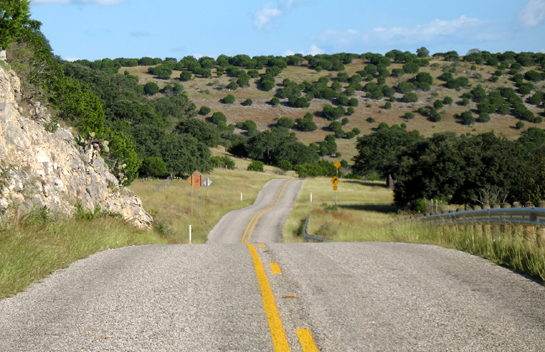In my return home during the long weekend, I was able to observe some the examples from our discussions on non-places and landscapes. While these concepts are a part of our everyday lives and do not require trips to other locations to make themselves apparent, I could not help but think of my movement through airports and the Texas Hill Country as a chance to examine these ideas.
In our discussions a few weeks ago on non-places, we noted a distinction between those who travel through airports and those who work there. With a flight at 5:30 in the morning, I got to the airport before many of the employees even arrived. While waiting for the ticket counter to open to check my bag, I watched as all of the TSA employees and airline workers walked in. As they came in holding a massive cup of coffee or talking with their other workmates about their families and weekend plans, this did not seem like a non-place to them. Instead they are part of one of the two taskscapes in the landscape of air travel that meet at airports: the taskscape of labor (in the sense of being tied to employment) and that of vacation/recreational travel. These workers are engaging in tasks that are similar in purpose to the businessman working on his laptop before a flight or to others, let’s say a graduate student, reading for their own work. The other group of people who form the second taskscape are travelers. They are engaged in tasks that are associated with moving, as easily as possible, from destination to another. Within these taskscapes of work and travel that occurring during air travel, airports serve as specific places where these tasks can occur rather than as non-places. In the modern sense of travel, landscape is not strictly restricted to land. Just as towns, watering holes, way stations, etc. serve as places for pause within a landscape, so too do airports.
Once in Texas I drove out into the Hill Country, a rural area outside of Austin of somewhat rugged terrain and limestone hills. The roads that are interwoven throughout this landscape match the description that Ingold gives of a network of paths and tracks: ‘In this network is sedimented the activity of an entire community, over many generations. It is the landscape made visible.” In moving through the landscape, even in the slightly detached vehicle of the automobile, the history of the generations who are attached to this landscape reveals itself. There are historical markers for Native American sites in the area, signs for the Chisholm Trail used to drive cattle to market, ranches, towns like Fredericksburg founded by German immigrants, and new wineries that show the changing economic dynamic of the Texas countryside. These places map the history of the landscape as it continuously changes and make it visible either to the traveler or to the one who is dwelling within the landscape.

